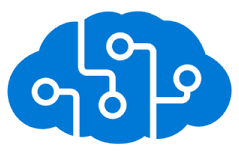

SD-WAN Solutions

The traditional WAN (wide-area network) function was to connect users at the branch or campus to applications hosted on servers in the data center. Typically, dedicated MPLS circuits were used to help ensure security and reliable connectivity. This doesn’t work in a cloud-centric world.
Times have changed. As businesses adopt the use of SaaS and infrastructure-as-a-service (IaaS) applications in multiple clouds, IT is realizing that the user application experience is poor. That is because WANs designed for a different era are not ready for the unprecedented explosion of WAN traffic that cloud adoption brings. That traffic causes management complexity, application-performance unpredictability, and data vulnerability.
Further, opening the enterprise to the Internet and the cloud exposes major threat and compliance issues. It is extremely challenging to protect the critical assets of an enterprise when applications are accessed by a diverse workforce, including employees, partners, contractors, vendors, and guests. Enabling broadband on the WAN makes the security requirements more acute, creating challenges for IT in balancing user experience, security, and complexity.


New business models drive the need for a new network model.
SD-WAN addresses the current IT challenges. This new approach to network connectivity can lower operational costs and improve resource usage for multisite deployments. Network administrators can use bandwidth more efficiently and can help ensure high levels of performance for critical applications without sacrificing security or data privacy.
The traditional WAN architecture was limited to enterprise, branch, and data center. Once an organization adopts cloud-based applications in the form of SaaS and IaaS, its WAN architecture experiences an explosion of traffic accessing applications distributed across the globe.
These changes have multiple implications for IT. Employee productivity may be compromised by SaaS-application performance problems. WAN expenses can rise with inefficient use of dedicated and backup circuits. IT fights a daily, complex battle of connecting multiple types of users with multiple types of devices to multiple cloud environments.
With SD-WAN, IT can deliver routing, threat protection, efficient offloading of expensive circuits, and simplification of WAN network management. Business benefits can include the following: